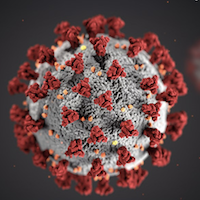 Smart Citations
Smart CitationsSee how this article has been cited at scite.ai
scite shows how a scientific paper has been cited by providing the context of the citation, a classification describing whether it supports, mentions, or contrasts the cited claim, and a label indicating in which section the citation was made.
Lower urinary tract symptoms and mental health during COVID-19 pandemic
Objective: Coronaviruses (CoVs) are a group of RNA viruses involved in several human diseases affecting respiratory, enteric, hepatic, and neurological systems. COVID-19 was identified in 2020 and was named SARS-CoV-2. To limit worldwide contagion, many countries instituted a lockdown, which conducted to disruption of routine life. In fact, pandemic was associated with several stresses among population, such as loss of employment, deaths of family members, friends, or colleagues, financial insecurity, and isolation. This led to long-lasting psychosocial effects as anxiety and depression, increasing the prevalence of stress and traumarelated disorders in the population. The aim of this study was to investigate the correlation between lower urinary tracts symptoms (LUTS) and stress/depressive symptoms during COVID-19 pandemic.
Materials and methods: An anonymous cross-sectional webbased survey (comprehending anthropometric data, education level, occupation status, smoking and alcohol habits, current therapies, quarantine and COVID-19 infection status) was conducted from March to May 2020 in Italy. LUTS were examined through National Institute of Health-Chronic Prostatitis Symptom Index (NIH-CPSI) and Genitourinary Pain Index (GUPI). Hamilton Depression Rating Scale (HDRS) was utilized to evaluate depressive and anxiety symptoms. Non-parametric Kruskal-Wallis H Test was used for statistical analysis.
Results: A total of 356 out of 461 subjects fully completed the survey, with a response rate of 77.2%. Data showed that subjects involved in economic difficulties, quarantine measures or with increased HDRS reported a significative statistic worsened urinary symptoms (H(3) = 11.731, p = 0.008), quality of life, (H(3) = 10.301, p = 0.016), total NIH-CPSI/GUPI score (H(3) = 42.150, p = 0.000), and quality of life (H(3) = 48.638, p = 0.000).
Conclusions: COVID-19 pandemic provoked several alterations in everyday life. Although general lockdown, quarantine and social distancing have been necessary to prevent virus spreading, this had long term effects on all population in terms of mental and physical health. NIH-CPSI and GUPI scores increased linearly with stress and anxiety levels measured at HDRS, confirming worse LUTS in subjects who suffered anxiety and stress from COVID-19 pandemic.
How to Cite
PAGEPress has chosen to apply the Creative Commons Attribution NonCommercial 4.0 International License (CC BY-NC 4.0) to all manuscripts to be published.

 https://doi.org/10.4081/aiua.2022.1.46
https://doi.org/10.4081/aiua.2022.1.46





